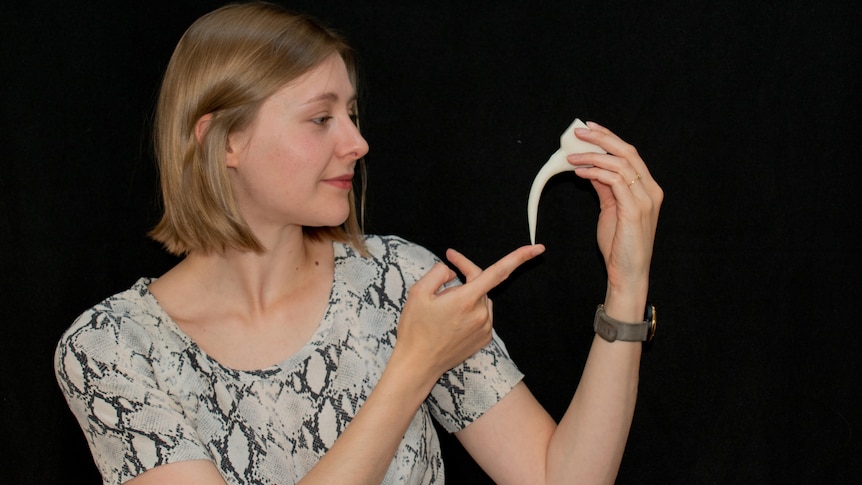Rachel Mealey: Would you sign up for the job of tempting snakes to lunge at artificial prey in the name of research? That’s exactly what Australian researchers did in France to help better understand how venomous snakes bite, including the Australian rough-scaled death adder. Found mostly in the Northern Territory, the death adders were the second fastest species at striking prey in the study, Joanna Crothers reports.
Joanna Crothers : On the outskirts of Paris, 36 species of snake were put in a glass experimental arena, complete with high-speed cameras, and tempted with a cylinder made of medical gel designed to mimic prey.
Alistair Evans: The very fastest biters, they moved at about 4.5 metres per second.
Joanna Crothers : That’s zoologist and professor of biology Alistair Evans. He helped work on this snake research project from Monash University, which was carried out at a specialist venom production facility in France. Each snake was put in the glass area one at a time, and an experiment used a pole fitted with the artificial prey to entice bites.
Alistair Evans: It’s quite a phenomenal sight because they open their jaws very rapidly. The vipers actually have fangs that fold back into their mouth, so when they open their mouth they also fold these fangs forward. Some of them were even dripping venom as they’re going towards the prey.
Joanna Crothers : Researchers looked at three main families of venomous snakes. Vipers, the elapids and colubrids. In Australia, the most common group is the elapids, which include the eastern brown snake, the red-bellied black snake and the inland taipan. Professor Alistair Evans says elapids sneak up before striking.
Alistair Evans: They have fixed fangs at the front of their jaw, and when we watched them striking their prey what they often did was bite initially and then repeatedly bite or pump their jaws.
Joanna Crothers : The study found colubrids sweep their jaws from side to side to make a large wound and deliver maximum venom. Snake researcher Timothy Jackson says the research is an important contribution to the intuition scientists have about the biology of venomous snakes.
Timothy Jackson : Look, it’s really cool having all of that quantitative analysis to confirm or nuance those intuitions is really important.
Joanna Crothers : He’s from the Australian Venom Research Unit at the University of Melbourne. He says snake research in Australia isn’t integrated well and that it’s hard to do studies like this here because we lack the venom labs and resources.
Timothy Jackson : And they’re so busy producing venom for commercial contracts that getting this kind of work done there would be kind of impossible without bringing in more staff.
Joanna Crothers : Professor Alistair Evans says venomous snakes are so diverse and expanding research is crucial to helping conserve them.
Alistair Evans: Only by looking at all these individual species can we get an idea of the differences in their feeding type and their speed.
Joanna Crothers : The study is the first to compare strike performance across 36 species and is published in the Journal of Experimental Biology.
Rachel Mealey: That story from Joanna Crothers and Jacinta Bowler.

